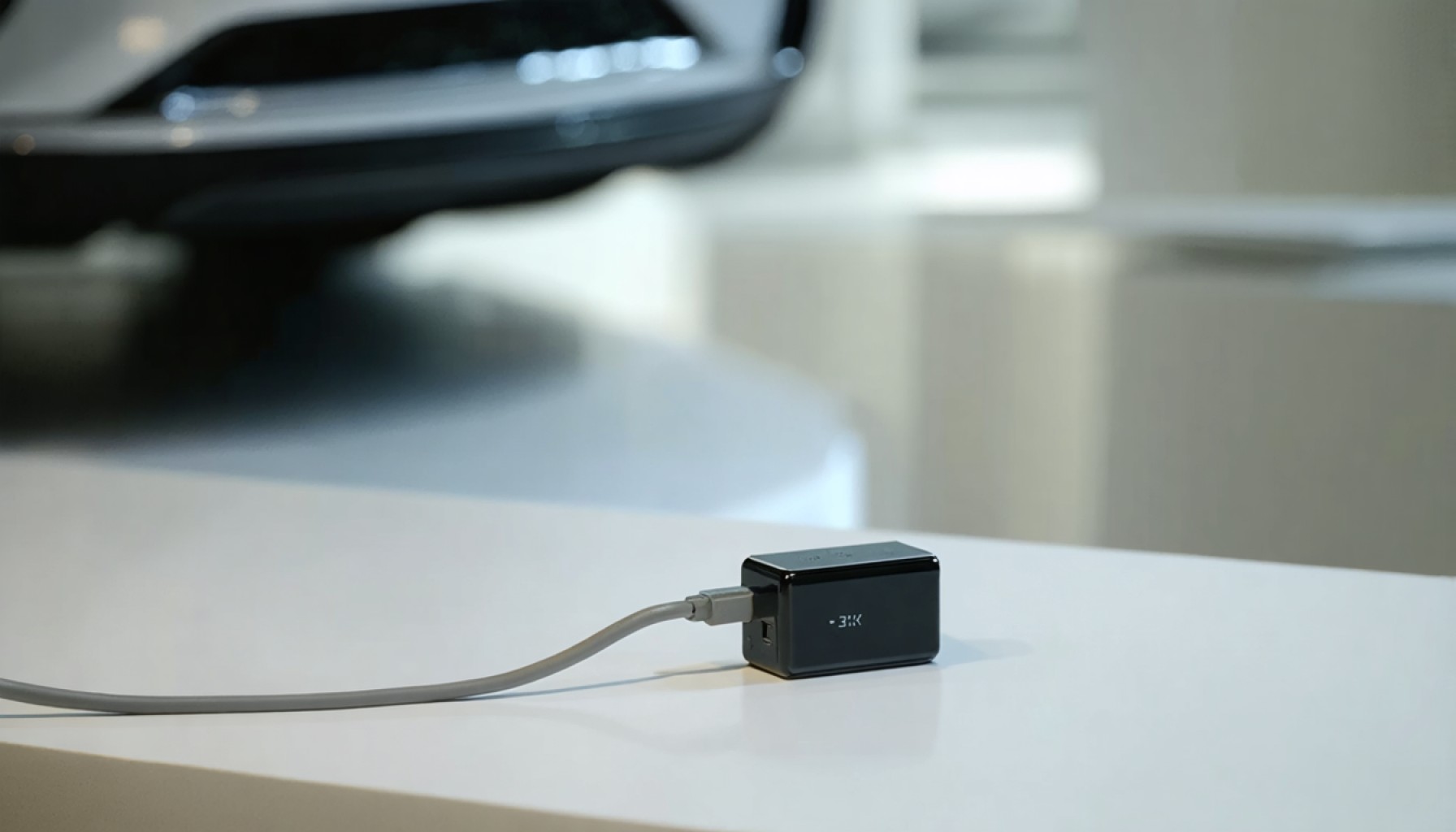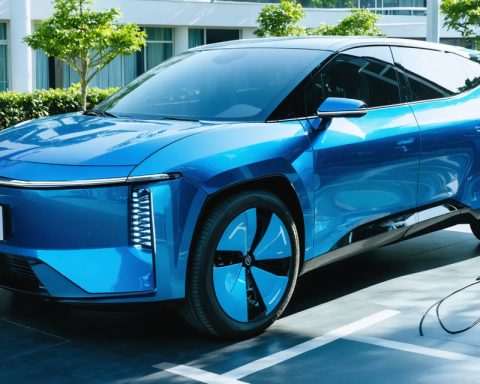- Battery swapping for electric vehicles (EVs) is set to revolutionize urban transportation by offering a rapid alternative to traditional charging.
- The market for EV battery swapping is predicted to grow from $4.52 billion in 2024 to $93.41 billion by 2035, reflecting increased demand for sustainable mobility solutions.
- The efficiency of battery swapping lies in its simplicity: EV drivers can quickly replace depleted batteries, significantly reducing downtime, especially for commercial fleets.
- Battery swapping stations are being integrated into urban infrastructures, offering space-saving solutions ideal for crowded city centers and emerging economies.
- Asia-Pacific, led by China and India, is at the forefront of this technological shift, with Europe and North America also advancing due to supportive government policies.
- Key industry players like ChargeMyGaadi, NIO, and Gogoro are pioneering innovations and partnerships to enhance EV infrastructure.
- As urbanization accelerates, battery swapping could become a vital component of sustainable urban transit.
A quiet revolution is simmering in the bustling streets of the world’s urban centers. As cityscapes become denser and the urgent need for sustainable transportation escalates, a solution that could redefine electric vehicle (EV) infrastructure emerges: battery swapping.
Imagine a world where the days of waiting hours to charge your electric car are replaced with a seamless battery swap in mere minutes. This vision is becoming a reality, propelled by a surge in demand for electric mobility and the growing clatter of global environmental concerns. By 2035, the market for EV battery swapping is forecast to skyrocket to approximately $93.41 billion, a monumental leap from its $4.52 billion valuation in 2024. Behind this astronomical rise is a fusion of technological innovation, urgent calls for sustainability, and the relentless march towards urbanization.
The genius of battery swapping lies in its simplicity and efficiency. Instead of plugging in and waiting, EV drivers can now glide into a station and exchange their spent batteries for fully charged ones. This swift exchange, ideal for the cramped confines of city centers, is especially appealing to commercial and public service fleets. Picture taxis and delivery vehicles buzzing around metropolises; driven by the need for speed and uptime, these vehicles face downtime no more, thanks to the quick dance of battery swapping.
Urban landscapes are evolving, with EV battery swapping stations woven into the existing fabric of bus depots, ride-hailing spots, and taxi ranks. Especially in emerging economies, these stations offer a compact alternative to sprawling charging setups. They not only preserve precious urban space but also propel the transition to greener transit options with minimal environmental impact.
Commercial fleets, a lifeblood of urban mobility, present a ripe opportunity. The logistics, public, and ride-hailing sectors are electrifying their fleets at an unprecedented pace. Rapid turnaround provided by battery swapping can keep more wheels on the road, driving this market forward.
Regionally, the landscape is diverse yet promising. Asia-Pacific leads the charge, with giants like China and India at the forefront, buoyed by a surge in EV sales. Meanwhile, Europe and North America aren’t far behind, spurred by assertive government policies pushing for greener alternatives.
In this burgeoning market, a cadre of key players, including ChargeMyGaadi, NIO, and Gogoro, dominate the scene. These pioneers are pushing boundaries, crafting innovative solutions while forging strategic alliances that will shape the future of EV infrastructure.
As urbanization accelerates, turning the streets of tomorrow’s cities electric, battery swapping stands to become a cornerstone of sustainable transportation. By offering rapid, efficient, and eco-friendly energy solutions, this pivotal shift could redefine how urban dwellers navigate their worlds — faster, greener, and without the wait.
Is Battery Swapping the Future of Electric Vehicles? Discover the Game-Changing Advantages and Limitations
Understanding Battery Swapping: The Next Big Thing in EV Technology
Electric vehicles (EVs) are increasingly seen as the future of transportation due to their potential to reduce emissions, enhance energy security, and revolutionize urban mobility. Among the innovative strategies reshaping EV infrastructure, battery swapping stands out for its potential to eliminate long charging times and improve efficiency. Here’s a closer look at the facts about battery swapping and its potential impact on the EV market.
How Battery Swapping Works
Battery swapping is a technology that allows EV owners to replace a depleted battery with a fully charged one at designated stations. This method significantly reduces the downtime associated with traditional charging practices, which can take hours. Battery swapping stations are often automated, ensuring a quick and seamless exchange process.
Benefits of Battery Swapping
1. Time Efficiency: The most obvious advantage is the reduction in wait time; swapping a battery can take as little as three minutes, similar to refueling a gasoline vehicle.
2. Space Optimization: In densely populated urban areas, swapping stations require less space compared to conventional charging stations.
3. Scalability for Fleets: Commercial fleets, taxis, and delivery services benefit from maximized vehicle uptime, reducing the need to take vehicles out of service for extended charging periods.
4. Cost-Effective Infrastructure: Infrastructure investments may be lower, as fewer charging stations are needed when swapping can handle the throughput of more vehicles.
5. Battery Lifecycle Management: Centralized control over battery health and lifecycle management can lead to more sustainable battery usage.
Real-World Use Cases
Major players like NIO in China have already established battery swapping networks, successfully integrating them with their EV ecosystems. Furthermore, swapping is becoming a compelling option for two-wheeler EVs in cities with high traffic congestion and limited parking capabilities, effectively demonstrated by companies like Gogoro in Taiwan.
Market Forecast and Industry Trends
The battery swapping market is poised for explosive growth, anticipated to reach $93.41 billion by 2035 from $4.52 billion in 2024. This growth aligns with the rising EV adoption, urbanization trends, and heightened environmental awareness. Countries like China and India are leading in market expansion due to government support and high population densities that favor swappable batteries.
Challenges and Limitations
1. Standardization Issues: A major challenge is the lack of a universal battery design, with different manufacturers producing non-compatible batteries.
2. Infrastructure Investment: Significant investment is required to establish and maintain a widespread network of swapping stations.
3. Consumer Adoption: There could be resistance from consumers who prefer owning a vehicle outright, including its battery, due to concerns over battery quality and longevity.
4. Environmental Concerns: While swapping may reduce charging wastes, the environmental impact of producing additional batteries cannot be ignored.
Regional Developments
– Asia-Pacific: Leading the industry, with China spearheading implementation and India quickly catching up.
– Europe: Strong policy support is paving the way for battery swapping network expansions, especially in countries with dense urban setups.
– North America: While slower on adoption, emerging support and investment indicate growth potential in the coming years.
Actionable Recommendations and Quick Tips
– Stay Informed on EV Innovations: Consumers and businesses interested in EV technology should keep abreast of battery swapping advancements and industry standards which are continuously evolving.
– Consider Fleet Electrification: Businesses looking to electrify should assess swapping capabilities to maximize operational efficiencies.
– Advocate for Standardization: Support industry-wide efforts toward battery standardization, potentially influencing future manufacturing and regulations.
Key Players in the Market
Companies like ChargeMyGaadi, NIO, and Gogoro are pioneering battery swapping solutions, crafting innovative approaches, and expanding networks for both two and four-wheel electric vehicles.
For a deeper dive into global transportation innovations, visit the U.S. Department of Transportation.
Battery swapping is more than just a novel idea; it’s a transformative approach to overcoming one of the biggest hurdles facing electric vehicle adoption today. As cities continue to grow and evolve, so too will the need for efficient, sustainable transportation solutions.










